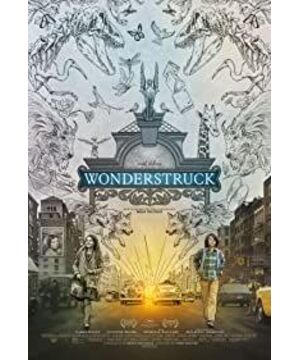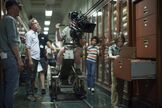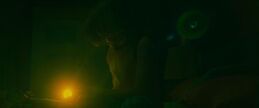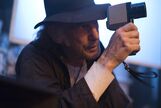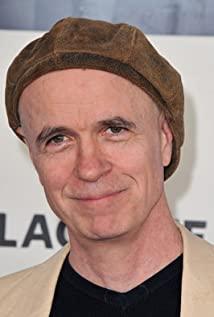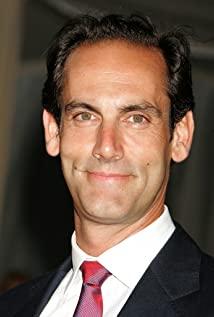Todd Hines' new work "Surprise in Silence" is easily reminiscent of two movies that are also stubborn bear children: "Hugo" and "Extraordinarily Loud, Very Close". The original novels and screenwriters of "Hugo" and "Surprise in Silence" are both written by Brian Selznick. In addition to the adventures of bear children, they also have (pointing to silent films) fandom plots; "Special Sound" ", Very Close" shares the story line of "searching for father-healing" with "Surprise in Silence", and is also permeated with "database love" for New York City. At that moment, it is inevitable not to remind people of the 9/11 incident as the core of the narrative in the former film. But what makes "Surprise in Silence" outstanding-even better than these two Oscar nominated films by master directors is its superb cinematic skills, which is not only reflected in the film's image quality In terms of collage processing, it also lies in the further development of narrative skills.
"Surprise in Silence" chose the two-line intertwined structure of time and space in 1927/1977. Among them, 1927 was presented in the form of silent film-certainly not the silent film of the silent film era, but some kind of improved, performance photography editing method. Silent films that are in line with the current movie-watching habits are not even as similar to the audio-visual style of real silent films (it is simply a pantomime and cannot be called a silent film) "The Artist" (Interestingly, both films happened to be stuck in the critical year when the sound film appeared. ), but Julianne Moore, as a star of the silent film era, played a few minutes in the film "Daughter of the Storm" still very well done, especially the costumes and makeup, only the performance seemed too constrained. Of course, Todd Hines's original intention was not to act in silent films (the few minutes of the in-film addiction is enough...) but to use this external expression (and that critical year) to deal with the film. Girl Rose's life experience and sense of age as a deaf-mute person. The 1977 part is basically the number of regular movies. It is worth mentioning that there are two points. Benjamin will alternate between subjective and objective voices after he lost his hearing due to a lightning accident. (Interestingly, this subjective voice is not necessarily connected to the POV lens. And the subjective voice is not completely silent—think of "The Tribe of the Deaf and Mute" hahaha); when Benjamin reads the family history that the elderly Rose told him with a pen, it is presented as a stop-motion animation on paper (which can be regarded as It is the director's tribute to his famous work "Superstar Carpenter"). The important thing is not that the collage mixes these materials to be advanced, but how to use them-this is where the director's skills and concepts are most considered.
From this perspective, "Surprise in Silence" uses space to promote narrative and form a connection between history and reality. The most important scene is the museum—the museum itself has the conditions for database narrative: collection/exhibition becomes the algorithm of the database, and this algorithm itself is closely related to the exhibition hall space. In the Natural History Museum, whether it is the "wonderstruck" (former) exhibition hall, the Great Plains Wolf exhibition cabinet, or the meteorite exhibition hall, providing a comparison between the past and the present is more important to the family. Of course, even more sensational is the New York miniature model in the World Expo Memorial, which was transformed by the guardian Rose into a souvenir to her son-this souvenir is made using the link between various personal items and the (synonymous) urban space. The effect is (to some extent) the personification of New York as a relative, and the rewriting of Rose from an adventurer in New York to a builder and guardian in New York; furthermore, this miniature is two more In time and space, the space explored by the girl Rose and the boy, and the moment when the two of them stepped into the model hand in hand and shared the family history is the highly cinematic essence of the film. This moment not only makes the database narrative established, but also In fact, a meta-narrative based on "manipulation" has been formed, and more importantly, it has a strong appeal. It is said that many colleagues shed tears.
Of course, the film is not without problems. The biggest problem is that Ben met a black partner of the same age, Jimmy, when he was looking for a bookstore in New York, and Jimmy’s father happened to be a staff member of the Natural History Museum... This series of coincidences is really impressive. Feeling too smooth. But it's still much better than "Hugo." However, this problem is simply not worth mentioning in the face of the film’s sophisticated beautification and superb cinematic level, let alone turning back and thinking, this story is exactly a contemporary fairy tale, this coincidence is in a sense instead. It is quite in line with the stylistic characteristics. I am optimistic about the film at least two Oscar nominations-art direction and costume design, the music seems to be very playful (although I think the music is too much and too full...), as for Cannes this year, at least I will not go home empty-handed.
View more about Wonderstruck reviews


